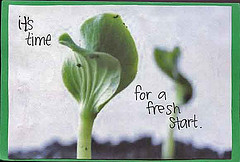Week 9:
Burgess and Green argue that: ordinary people who become celebrities through their own creative efforts “remain within the system of celebrity native to, and controlled by, the mass media” (Reader, page 269).
YouTube’s slogan is ‘Broadcast Yourself’ and by God do people take that statement to the extreme. Everything from people having a running commentary on a film, to a goat who sounds like a man, is posted on YouTube as a way for society to have a creative outlet.
Sometimes, you strike gold and there is a serious talent on YouTube; be it comedic talent, musical talent or otherwise.
You have to have been hiding under a rock for the past 5 years or so not have have heard of at least one celebrity who has not been made famous by their YouTube or MySpace and become a celebrity mogul.
Whether it is THE BEIBS, Susan Boyle, The Lonely Island or Darren Criss- everyone knows of one!
Darren Criss shot to fame for his role in A Very Potter Musical performed by the theatre troupe Team StarKid from The University of Michigan. When videos of the performances were circulated on YouTube, Criss started getting recognized for his acting and singing abilities.
The exposure that came from his stint in the play uncovered his talent for all of the internet and general society to view.
This led to Criss being picked up by Glee producers in 2010 to play Blaine Anderson, the lead singer of The Warblers.
On a slight tangent, the opposite can also occur, where a pre-established celebrity can have their personal life (and incident like a crew member walking into your line of sight while you’re saying your line), plastered all over the internet and have it reproduced and mocked to the nth degree on YouTube. Like Christian Bale. In this case, a celebrity’s reputation is tarnished because the scope of YouTube is so wide. While Christian Bale may have used more creative words, than creative efforts, his celebrity status was solidified by how much exposure the YouTube videos garnered.
Back on topic, as Burgess and Green stated, even though a person may become famous thanks to their creative talents, they “remain within the system of celebrity native to, and controlled by, the mass media” (Burgess and Green, 23). This is because YouTube does have limits when promoting talent. To a certain extent they foster creativity on the world wide web, however the mass media does ultimately have control over what is accepted in mainstream society as genuine talent.
As stated by Burgess and Greene, ultimately the “marker of success for these new forms [of talent], paradoxically, is measured not only by their online popularity but by their subsequent ability to pass through the gate-keeping mechanisms of old media- the recording contract, the film festival, the television pilot, the advertising deal (Burgess and Green, 24)”.
As seen by Darren Criss, his popularity was certainly marked by the ‘views’, ‘likes’ and ‘rates’ on his YouTube videos but his celebrity status and his passage into the system of celebrity and his remaining status in this institution is only solidified by the mass media. That is, his television contract with Glee and subsequent benefits such as advertising deals, interviews etc.
Without the mass media, thousands upon thousands of internet sensations who may have worthwhile talent fall to the wayside because they don’t have the structuring to support them that the mainstream media provides. YouTube and other internet sites that work to foster creativity are a “monumental marketing platform (Giuffo)” for molding ordinary people into inhabitants of the mass media.
A lot of internet sensations have had fleeting success whereby their popularity has diminished as soon as the next speaking goat video pops up. The propensity of an internet celebrity to become a ‘real life’ celebrity ultimately comes down to where society’s attention span leads them. If they heavily star in people’s social networking arena and gain a wider following with higher ratings, and appear in the ‘suggestion’ box then they may have a chance of lasting in the public eye and gaining a mainstream following.
References
Jean Burgess and Joshua Green, ‘YouTube and The Mainstream Media’ in YouTube: Online and Participatory Culture, Cambridge: Polity Press, 2009, pp.15-37
John Giuffo, ‘Ten Videos That Made YouTube Famous’, Forbes, http://www.forbes.com/2007/04/30/youtube-videos-hits-ent-cx_jg_07networks_0430tube.html, accessed 9 May 2011, dated 30 April 2007












